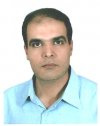| Authors | مهدی وحدتی,رمضانعلی مهدوی نژاد,سعید امینی,مرادی |
|---|
| Journal | Journal of Advanced Materials and Processing |
|---|
| Page number | 15 |
|---|
| Volume number | 3 |
|---|
| Paper Type | Full Paper |
|---|
| Published At | 2015-03-11 |
|---|
| Journal Grade | Scientific - research |
|---|
| Journal Type | Electronic |
|---|
| Journal Country | Iran, Islamic Republic Of |
|---|
| Journal Index | ISC ,SID |
|---|
Abstract
Ultrasonic vibration assisted single point incremental forming
(UVaSPIF) is based on localized plastic deformation in a sheet
metal blank. It consists of deforming gradually and locally the
sheet metal using vibrating hemispherical-head tool controlled by a
CNC milling machine. The ultrasonic excitation of the forming
tool reduces the vertical component of the forming force. In
addition, application of ultrasonic vibration reduces the surface
roughness of the specimen. Surface roughness is one of the
quantitative and qualitative parameters, which is used to assess the
quality of the final product. In the present paper, a statistical
analysis and optimization of the effective factors on this parameter
are performed in the UVaSPIF process. For this purpose, response
surface methodology (RSM) is selected as the experiment design
technique. The controllable factors such as vertical step size, sheet
thickness, tool diameter, wall inclination angle, and feed rate are
specified as input variables of the process. The obtained results
from the analysis of variance (ANOVA) and regression analysis of
the experimental data confirm the accuracy of the mathematical
model. Furthermore, it is shown that the linear, quadratic, and
interactional terms of the variables are effective on the surface
roughness parameter. To optimize the surface roughness
parameter, the most appropriate conditions of the experiment are
determined using desirability method, and statistical optimization
is subsequently verified by conducting the confirmation test.
